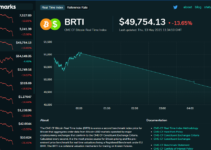It’s been a theme throughout the year: digital assets like Bitcoin are breaking into mainstream financial services.
The expectation is that technology can bring its services to the consumer on a pre-dawn Sunday when they want to make an impulse buy – and that’s exactly what digital assets enable. They let financial institutions put a disposable asset in the hands of a consumer even during off-banking hours with immediate settlement.
Finding the way to that reality was the subject of a recent webinar held by RSM US, LLP – and an important of that is recognizing the organizations already out in the lead.
“I think more than anything, it’s actually payments firms that are disrupting the banking industry,” said Jay Schulman, National Leader, Blockchain and Digital Assets at RSM US. “Paypal, Stripe, Square, Venmo, Bitpay. Bitpay’s an interesting one here because they’re a gateway between crypto and the classic banking world. When we talk about digital assets, I want to get out of the mindset of investments, and get into the mindset of payments – that’s where a lot of the disruption is going to be.”
A lot of the big institutions are trying to make sure they’re on the leading edge of that disruption – from Visa and Mastercard to massive players like JP Morgan and USBank. But not all their approaches are identical, and nor should they be for any financial institutions entering this space: far better than a cookie-cutter approach is a strategy tailored to an individual business’s clients and focus.
“When you think about the strategy of the bank, you start to look at the core banking platform and what features and functions that gives you,” Schulman said. “Then you start to look at the other services you’re going to offer. What in particular can your bank offer around digital assets?”
And in a banking space that is increasingly moving to digital-only, functionality may not be the only consideration that goes into answering that question.
“It’s really interesting to look at statistics PayPal put out when they let users start to buy Bitcoin and Ethereum,” said Jamison Sites, Financial Services Senior Analyst at RSM US. “The engagement they saw with their application was through the roof. Those users may have only been looking at the movement of Bitcoin price, but anything you can do to get users onto your platform is a great tool to drive to other services you provide.”
As regulatory clarity continues to draw closer across the US, the need for banking institutions to have a clear plan on how to navigate into this space is only going to grow more urgent going forward. There are some third-party providers that can help, though that path, like any other, has its own pros and cons.
“Your bank may choose not to use digital assets, but if you find you’re struggling to keep up, you can find some of these neo-banking platforms to move to,” Schulman said. “Nimbus and Mambu and some other providers are making a dent here in the U.S. You don’t have to use them to enter this space, but when we start talking about new products like this, it really does open the conversation for what’s out there. I think these new banking platforms will continue to grow. We’re going to see these new and innovative services that are really difficult to offer under the core banking platforms we’re used to.”
Much like the shift to online banking in the early 2000s, however, these are services that are likely to be considered ubiquitous in the coming decade.
“I fully expect banks of all sizes, from state and local to the federally chartered, to bolt on some way or another,” Sites said. “It’s just a question of how they tap into this market, and what are the options for doing so.”
